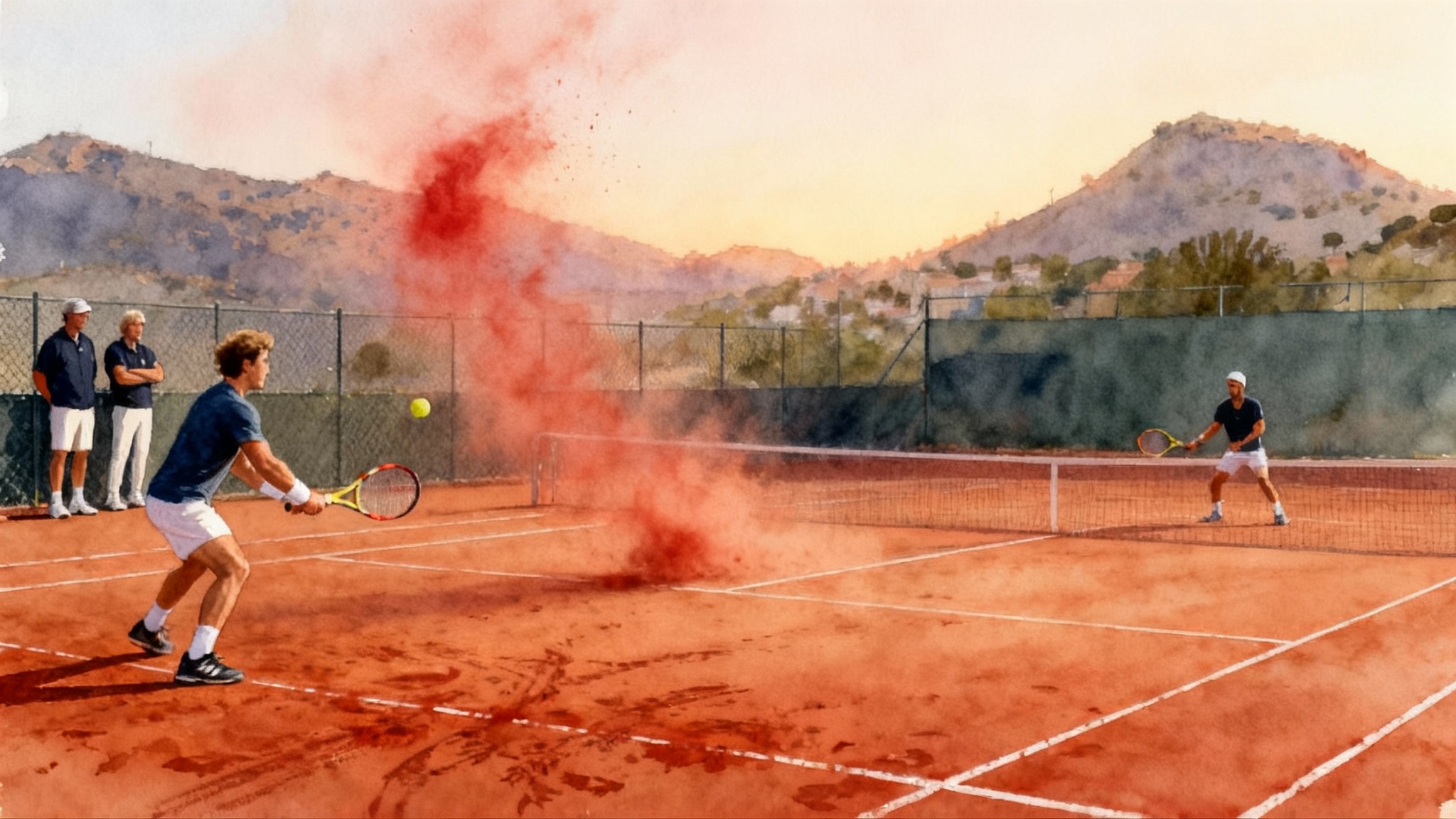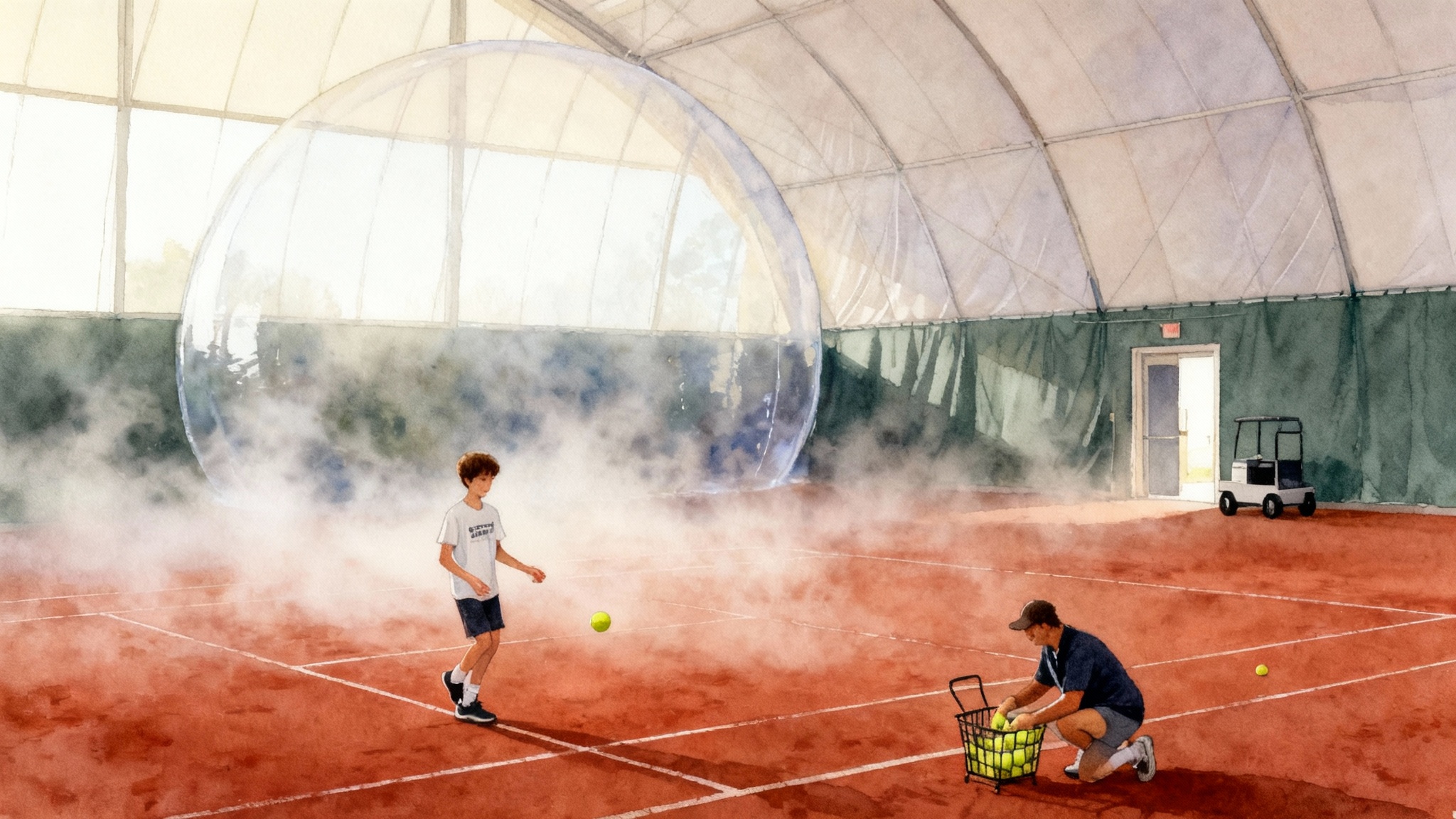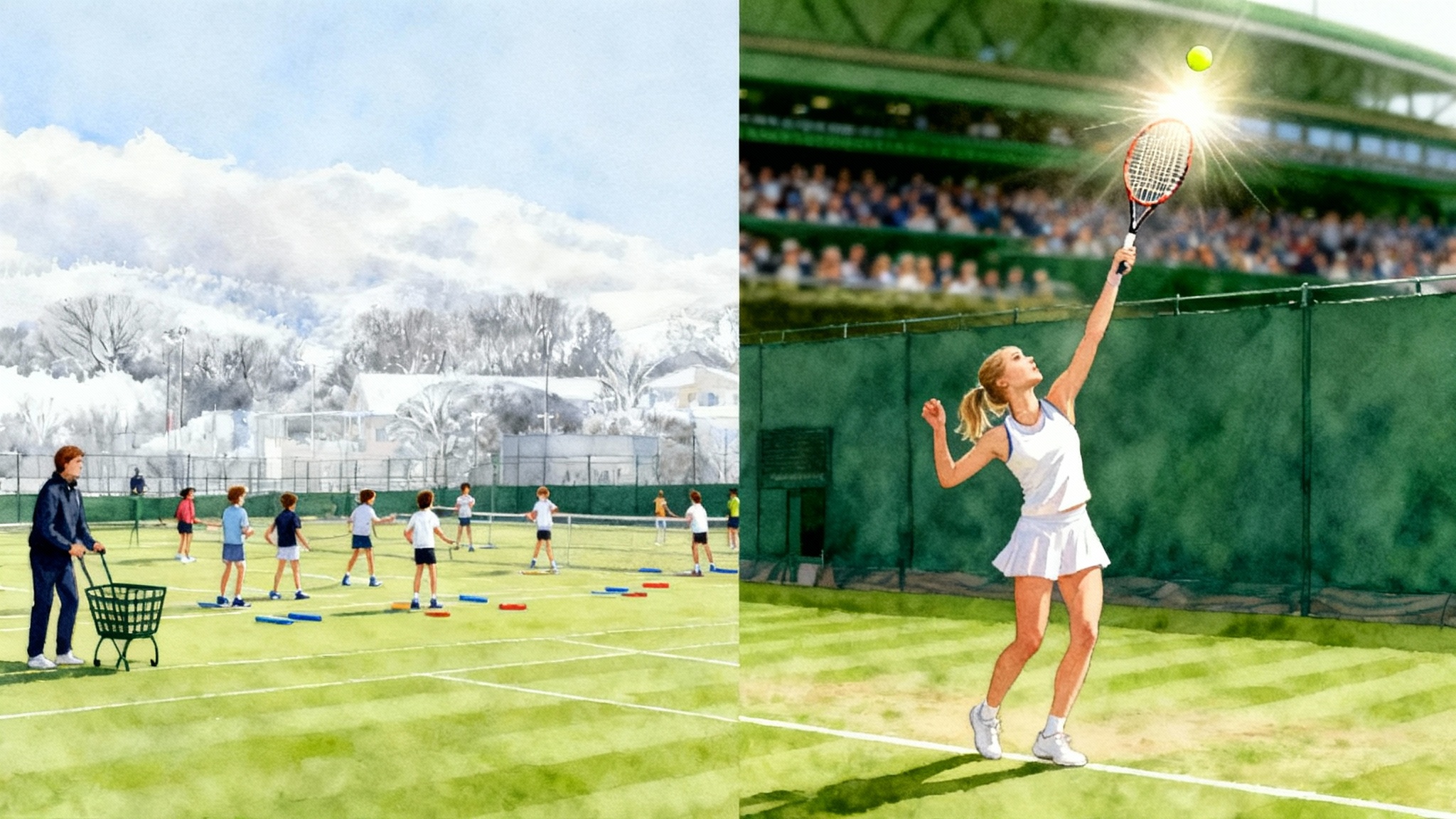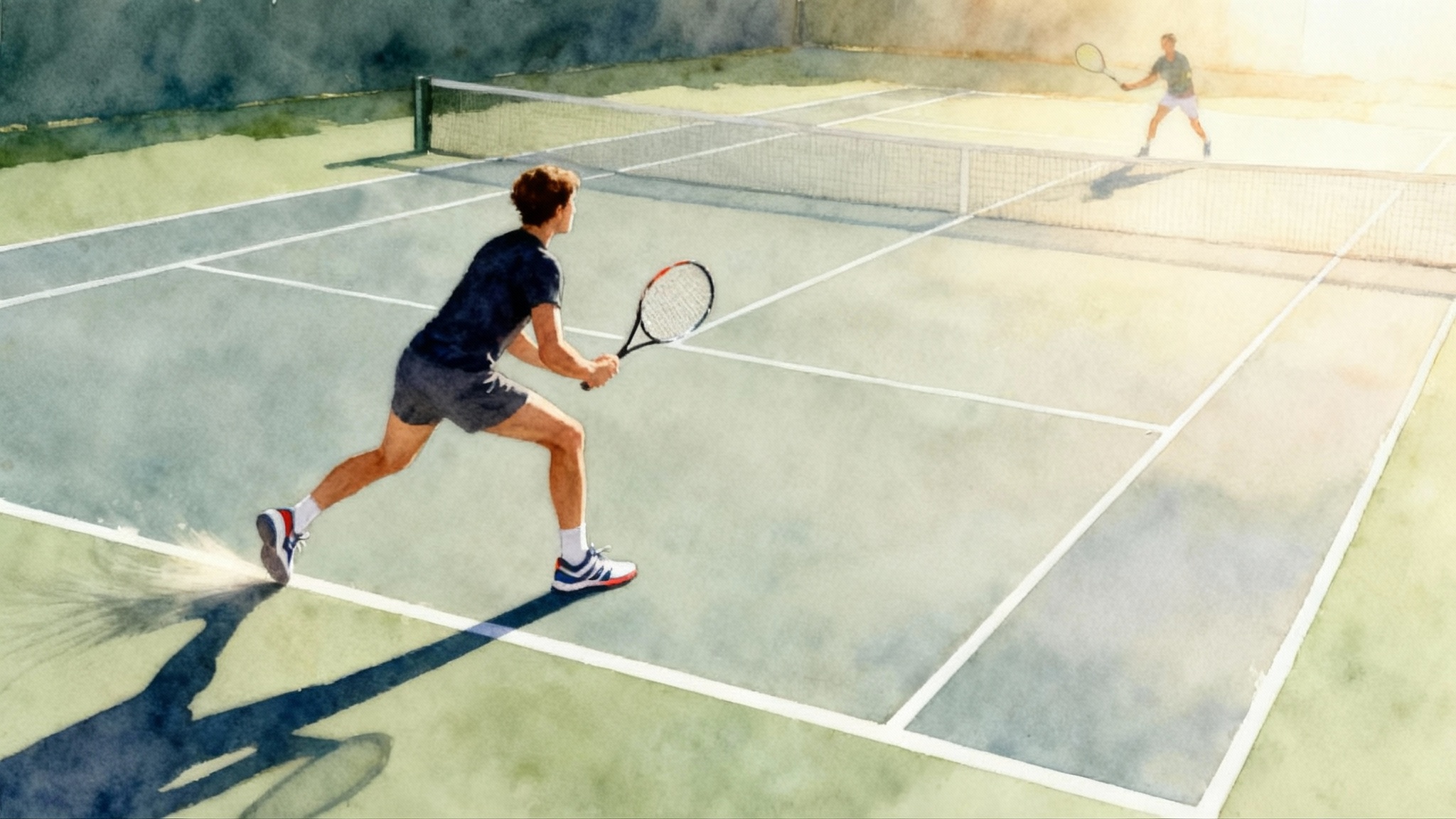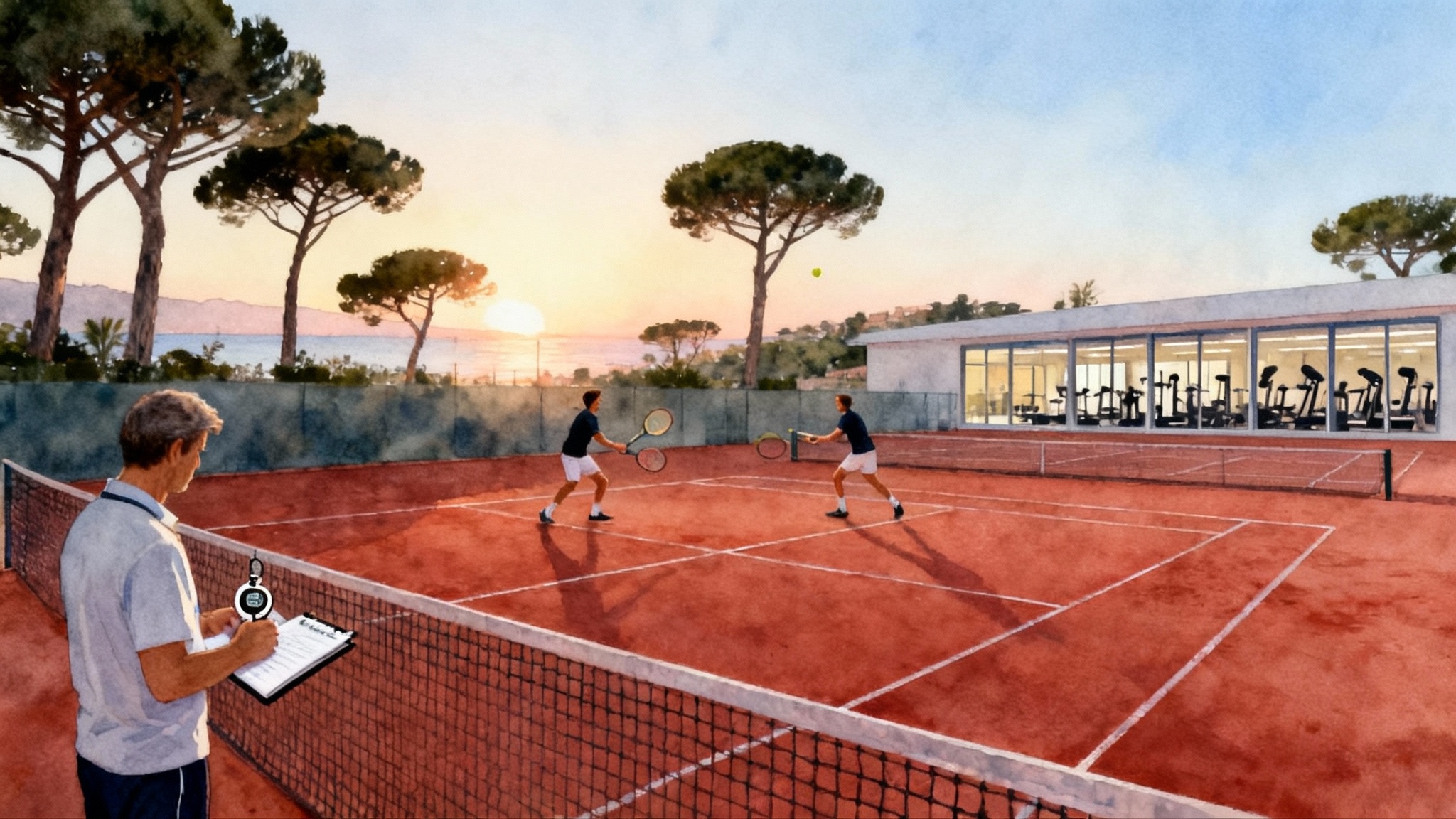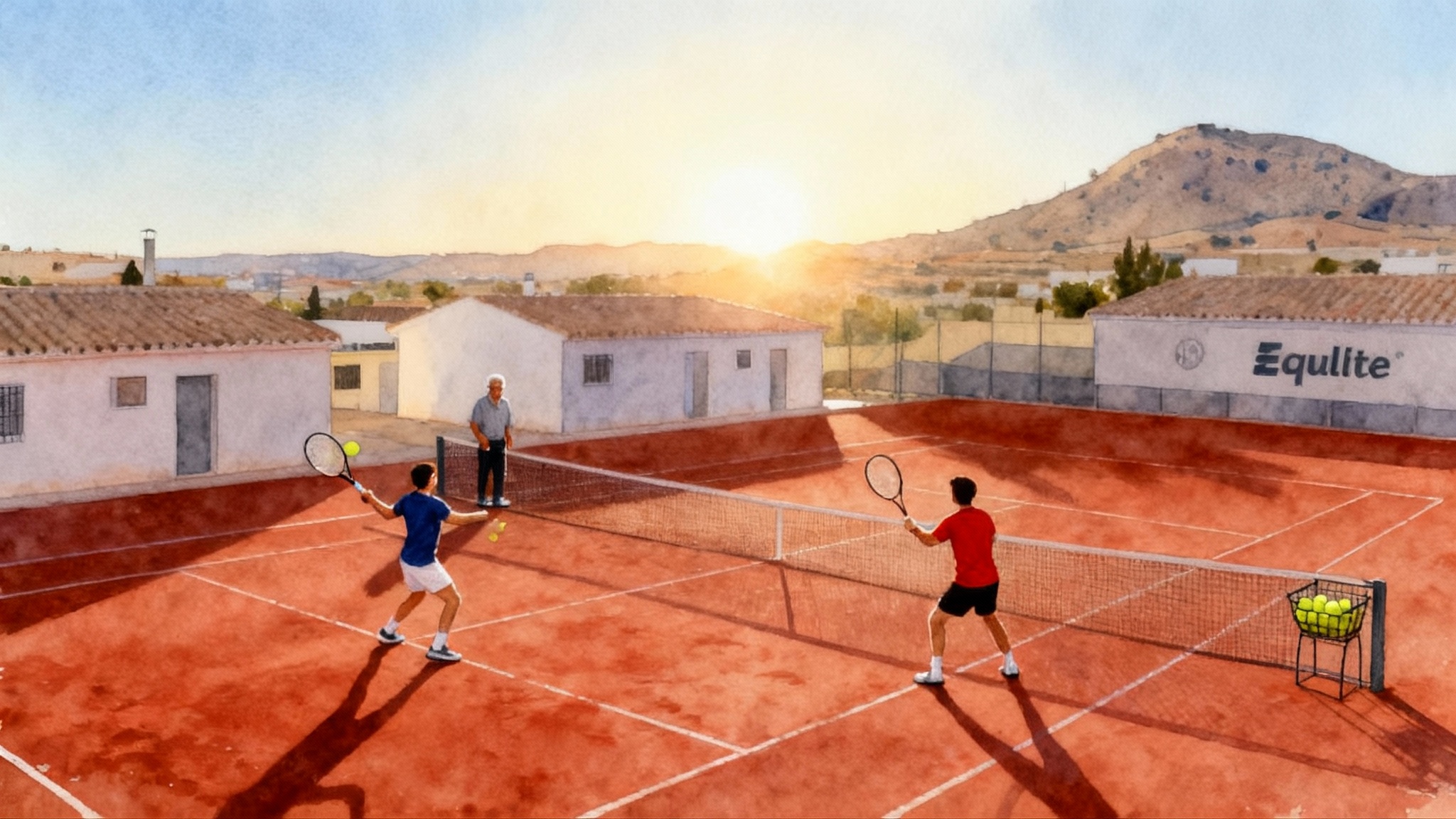From Dolomites to Bordighera: How Piatti Academy Forged Sinner
At 13, Jannik Sinner left elite junior skiing in the Dolomites for full‑time tennis at the Piatti Tennis Center in Bordighera. Inside the academy’s habits and the later Vagnozzi and Cahill refinements that powered his rise to the top.
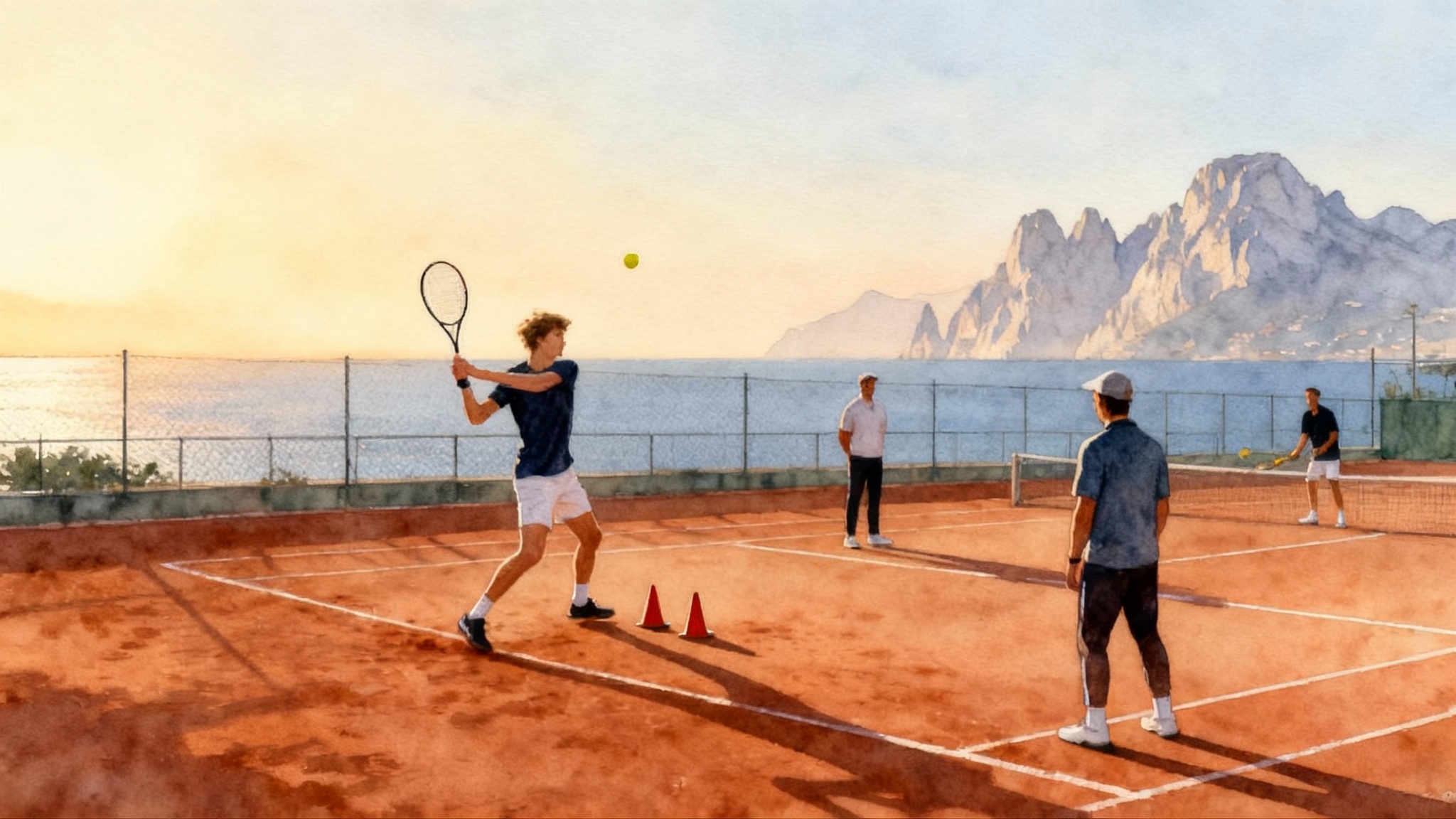
A boy on two edges: skis and strings
Before he learned to bend rallies, Jannik Sinner learned to carve snow. Growing up in the Dolomites, he was an elite junior skier who spent long days reading terrain, managing speed, and trusting precise edges. The winter sport taught him how to stay calm while traveling fast and how to load and unload force through his hips and ankles. When he committed to full time tennis at 13, those instincts transferred. The result was a mover who glides rather than scrambles, a striker who can balance power with quiet feet.
Switching paths at 13 is not late, but it is not early either. It demands a clear framework. That framework came from Riccardo Piatti in Bordighera on the Ligurian coast, where Sinner relocated to train. The move required leaving home, accepting a new daily rhythm, and trusting an academy that makes simple ideas hard to escape. Simplicity was the feature, not the constraint.
The decision that unlocked speed
Two sports had stretched Sinner’s coordination. Ski gates and slalom timing map surprisingly well to tennis footwork. In both, your center of mass must stay ahead of your limbs, and decisions happen before the body shows them. At 13, a choice had to be made. Splitting attention across two high level tracks would anchor progress. Sinner chose tennis and moved to Bordighera, where the Piatti Tennis Center in Bordighera is built around three principles: strip technique to essentials, raise ball volume without drama, and enforce contact point discipline on every stroke. The academy also trains a specific temperament. The player is asked to compete with calm rather than with sparks.
Parents often ask whether such a relocation is worth the upheaval. The answer depends on whether a player’s environment at home can provide consistent, high quality repetition and a shared language among coaches, fitness staff, and teachers. In Sinner’s case, the answer was yes for relocation because Bordighera could provide something the local setup could not: a daily machine that made improvement unavoidable.
Inside Piatti’s academy: habits that travel
What happens inside a great academy is often less mysterious than it looks from the outside. The power is not in secret drills but in how simple rules are enforced every hour. Four habits defined Sinner’s foundation in Bordighera.
1) Technical simplification
Complex technique is slower to repeat under pressure. Piatti’s staff asked Sinner to reduce variables. The forehand backswing became compact and repeatable through a consistent slot. The backhand takeback was aligned with shoulder turn rather than with independent arm travel. On the serve, the focus was a clean trophy position and a clear line from legs to contact, not a search for exotic shapes. Simplification does not mean conservative. It means fewer moving parts, so timing survives stress. When a teenager faces faster balls and noisier stadiums, fewer variables are a gift.
2) Relentless two on one volume
Two coaches or one coach with a sparring partner would hit at Sinner from both sides of the court. The constraint could be as tight as half court to his backhand, or alternating heavy crosscourt and flatter line balls. The purpose was not punishment. It was to increase the number of quality contacts per minute while keeping the decision tree simple. Two on one also has a hidden benefit. It normalizes being outnumbered, which later makes one on one feel spacious. When Sinner graduated to professional events, the rally speeds felt familiar because his nervous system had already metabolized higher loads.
3) Contact point discipline
The staff used markers to define an acceptable strike zone for each stroke, then rehearsed micro adjustments to keep the ball in that window. If the contact drifted late, footwork was corrected first, not the hand path. If the ball sat too close to the body, recovery steps were cleaned before adding racket speed. The player learned to own the ball instead of the ball owning the player. That habit explains Sinner’s unusual balance when he drives through shoulder high backhands or redirects pace with minimal backswing.
4) Calm competitiveness
Many academies chase emotional intensity. Piatti’s group prioritized clean execution at a controlled heart rate. Competitive games were frequent, but tantrums or highlight reel shot making were not the currency. The currency was hitting the target twenty times in a row under agreed constraints. That is why Sinner looks unhurried in big moments. He had practiced pressure without theatrics. For related footwork priorities, see our split step mastery guide.
First tests: Futures, Challengers, and the first belief
Youth development inside an academy only matters when it maps to the outside calendar. Sinner’s route shows how to time each level.
- Leaving home at 13: a cost paid early for a structure that could be repeated daily.
- First professional points in lower tier events: International Tennis Federation Futures events taught the weekly grind. Practice volume held, even when the match results lagged.
- First Challenger breakthrough in 2019: the level fit his ball speed and balance. The key was not a new shot but the same contact point control under longer rallies and louder crowds. His ranking moved quickly because the base was real.
By the end of 2019 he had a signature moment: winning the Next Gen event for the best under 21 players. He did not overpower the field. He systematically won patterns by playing to his contact windows and by accepting ugly points without panic. In 2020 he reached the Roland Garros quarterfinal on debut and won his first Association of Tennis Professionals title in Sofia. Those jumps came from better pattern clarity rather than from a sudden jump in strength.
Early Association of Tennis Professionals breakthroughs: the Sinner pattern set
From 2020 to 2021 the catalog of plays widened.
- Serve plus backhand through the middle: a simple serve to a body or T target followed by a firm backhand deep through the center. It removed angles for the opponent and set a second forehand that he could uncork to either corner.
- Backhand redirect off pace: because the takeback is small and the base is calm, he can change direction without selling it. This is a technician’s shot driven by contact timing.
- Forehand height change: lifting heavy crosscourt to push opponents back, then flattening early inside in. The contrast is what hurts opponents, not raw miles per hour.
These patterns sound basic, which is the point. Basic patterns stay available on bad days. They also scale to faster opponents because the geometry does not depend on fragile timing tricks. For another case study in foundational academy work, compare with how Pilic’s academy forged Djokovic.
The 2022 coaching change: new team, same foundation
In early 2022 Sinner parted with Riccardo Piatti and began working with Simone Vagnozzi. Later that season Darren Cahill joined the team. For many players, a staff change is a hard reset. For Sinner, it was an iteration. The Vagnozzi and Cahill group respected the academy foundations and worked as pattern editors rather than architects.
What stayed the same:
- The simplified swings and small takebacks
- The two on one style ball volume in practice blocks
- The strict contact windows and footwork first approach
- The calm scoreboard behavior
What changed:
- Serve patterns by score: more first serves into the body on pressure points to reduce the returner’s swing, then a higher percentage of wide serves at 40 love to cash in quick holds.
- Second serve elevation: more shape and depth, not just speed. The goal was a higher bounce that buys time for the first groundstroke.
- Return position variety: moving closer against second serves to make the opponent feel rushed, then retreating against big first serves to keep rallies neutral.
- Forehand court positions: setting contact slightly further in front and striking from a foot inside the baseline after neutral balls, which lifted his ability to finish points early without taking wild risks.
The results followed. Titles arrived at larger events, and by 2024 he had claimed a major title and reached the top of the rankings, as reflected on the Jannik Sinner ATP profile. Those headlines were the visible part. The hidden part was continuity: the new team did not throw out the Bordighera blueprint. They sharpened it for Top 10 and then for number one tennis.
What parents can learn from the Sinner case
Every family story is different, but Sinner’s path gives usable checkpoints.
When relocation makes sense
Relocation is a tool, not a badge. Consider moving if three conditions line up:
-
Daily density: your child can get at least two high quality hitting blocks on most days with a variety of ball speeds, plus a clear weekly fitness plan and recovery. If this is not possible at home, relocation may be justified.
-
Shared language: the academy has a documented approach to technique, footwork, and patterns. Watch a few groups. Do different coaches cue the same ideas with the same words. If not, your child will spend energy reconciling mixed messages.
-
Educational support: ask how the academy coordinates with school. A good setup should offer quiet study blocks, time management help, and travel planning that reduces academic chaos.
If one of these is missing, consider hybrid solutions first, such as monthly training blocks or seasonal residencies.
What to look for in daily training blocks
You do not need trade secrets to assess practice quality. Look for the following markers.
- Simplicity enforced: the coach places cones or markers and holds the player to target windows. If the contact drifts, the fix starts with feet, not hands.
- Ball volume without emotional volume: the environment is focused, not loud. Players hit many balls with clear rules. Corrections are short and precise, not lectures.
- Two on one or constrained drills: the player often trains while outnumbered or with restricted court space. This creates useful stress that later makes matches feel spacious.
- Pattern work by score: serve plus one and return plus one are drilled with score scripts. For example, at 30 all the player must hit a body serve and a backhand through the middle, then earn a forehand. The script makes decisions automatic on match day.
- Physical literacy inside tennis: footwork ladders and general athletic work are integrated into hitting sessions, not siloed away. The aim is to make first steps, deceleration, and re acceleration a single skill that the player can feel.
If you see a lot of aimless crosscourts, unexplained grip tinkering, or frequent stops for long talks, the session is wasting time.
Why a multi sport base can pay off
Sinner did not arrive with a magic forehand. He arrived with generalized balance and calm speed from skiing. You do not need alpine terrain to get this benefit. Gymnastics builds body awareness. Basketball teaches spacing and fakes. Soccer demands first steps in traffic. The shared theme is coordination under changing conditions. Delay specialization until the body has a movement vocabulary. When tennis becomes the primary language, the player will speak it more fluently.
Action steps for families with young players:
- Keep two sports through age 12 if feasible. Do not chase tournament points in both. Chase movement quality and joy.
- When narrowing to tennis, pick a six month block with consistent coaching and a clear plan rather than weekly chaos with many voices.
- Measure practice by contacts per hour and by how often your child meets a defined contact window. Keep a simple log. Improvement should show up as more consistent windows at higher speeds.
Building a Top 10 version of simple tennis
Sinner’s mature game is a study in how to professionalize simplicity.
- Serve: a reliable first serve that sets up the next ball. The jump was not only in speed but in placement by score and in mixing body serves to crowd hitters who love to take full swings.
- Return: compact backswings and a willingness to move in against second serves to steal time. When he backs up, he buys space to start neutral rather than giving away short balls.
- Forehand: two modes. Heavy crosscourt to push opponents off the baseline, then a quicker inside in or inside out strike once he owns the middle.
- Backhand: drive through the center to remove angles, then take line early when the opponent expects another cross. This keeps rallies predictable for him and unpredictable for the other side.
- Movement: always inside the court after a neutral ball. The first recovery step is forward, not backward, which keeps contact in front. For a complementary case study, compare with Equelite’s Alcaraz blueprint.
None of these require a unique body type. They require a player who knows what his contact should feel like and keeps that feel under stress. That is why the academy habits mattered so much. They trained the taste of a good hit and then challenged that taste with volume and constraints.
A practical checklist for coaches and programs
If you run a program and want to create Sinner like conditions, adopt a few non negotiables.
- Contact windows taped on the court for forehand and backhand. Stop play when the player repeatedly hits outside the window. Solve with footwork.
- Two on one as a daily staple, not a punishment. Vary feeds and constraints, keep points to three balls, then to five, then to live play.
- Score based pattern scripting. For example, 15 30 equals body serve plus deep middle backhand. 30 15 equals wide serve plus heavy crosscourt forehand. Rotate scripts weekly so the player learns adaptability.
- Emotional neutrality. Coaches model the heart rate they want to see. Praise is for meeting constraints, not for winners.
- Weekly movement audit. Track first step speed, deceleration control, and recovery direction. If recovery steps drift backward, build drills that reward stepping into the court.
The long arc: from mountains to the number one spot
By 2023 the results were glowing at the highest level, with large titles and a championship run for his country. In 2024 he lifted his first major trophy and reached world number one. That arc looks steep, yet the slope was laid years earlier. The two most important choices were not flashy. First, delaying specialization until 13 created a broader movement base. Second, choosing an academy that removed clutter rather than added novelty allowed simple patterns to survive pressure.
For families and coaches, the lesson is encouraging and demanding at once. You do not need a mystery formula. You need the courage to do the obvious every day, and the discipline to remove what is not helping. When relocation is the right tool, use it with a plan. When it is not, build an environment at home that looks like Bordighera in miniature: fewer variables, more quality contacts, calmer competition.
Closing thought: the elegance of enough
Sinner’s story is not about charisma at contact. It is about contact that repeats. From the Dolomites to Bordighera and through the Vagnozzi and Cahill years, the throughline is the elegance of enough. Enough space in the swing. Enough discipline in the feet. Enough volume to make good days common. That is how an athlete who once chased hundredths on snow learned to take time away on a court. The blueprint is available to anyone willing to keep the game simple and repeat it until simple becomes elite.
